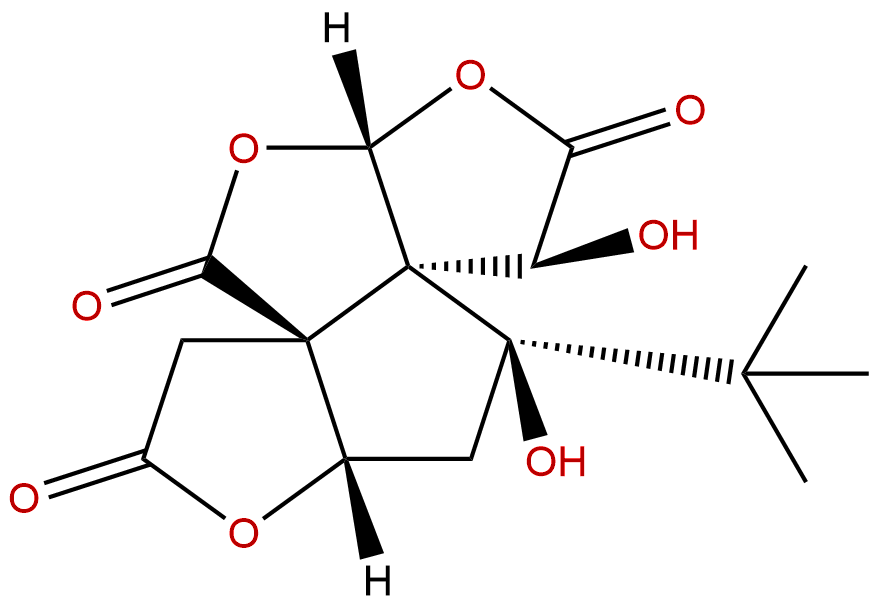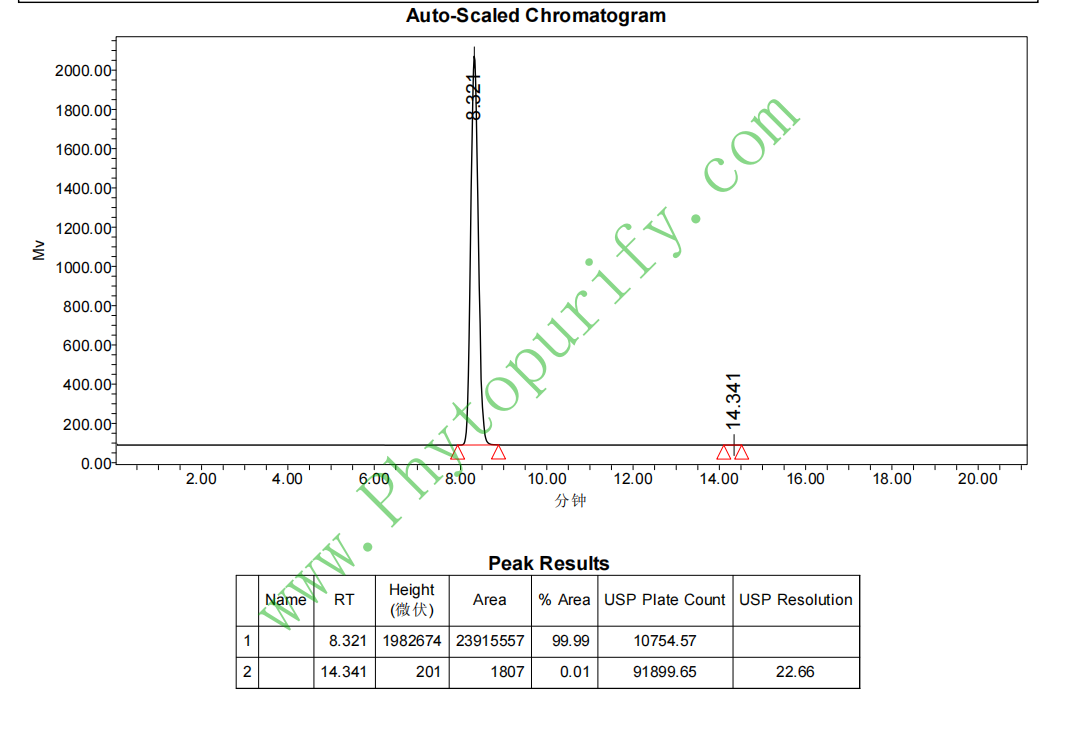Bilobalide A Descrtption
Synonym name: Bilobalide A
Catalogue No.: BP0274
Cas No.: 33570-04-6
Formula: C15H18O8
Mol Weight: 326.301
Botanical Source: leaves of Ginkgo biloba (ginkgo)
Purity: 95%~99%
Analysis Method: HPLC-DAD or/and HPLC-ELSD
Identification Method: Mass, NMR
Packing: Brown vial or HDPE plastic bottle
Can be supplied from milligrams to grams.
For Reference Standard and R&D, Not for Human Use Directly.
Inquire for bulk scale.
References
1, Bilobalide, a constituent of Ginkgo biloba, inhibits NMDA-induced phospholipase A2 activation and phospholipid breakdown in rat hippocampus.
Naunyn Schmiedebergs Arch Pharmacol. 1999 Dec;360(6):609-15.
2, Bilobalide, a unique constituent of Ginkgo biloba, inhibits inflammatory pain in rats.
Behav Pharmacol. 2013 Aug;24(4):298-306
3, Activity of bilobalide, a sesquiterpene from Ginkgo biloba, on Pneumocystis carinii.
Antimicrob. Agents Chemother. July 1993 vol. 37 no. 7 1492-1496
ABSTRACT
The sesquiterpene bilobalide, extracted from Ginkgo biloba leaves, was tested in vitro and in vivo for the ability to inhibit Pneumocystis carinii growth. Bilobalide was inhibitory to trophozoites cultured on human embryonic lung fibroblasts (HEL 299) at approximately the same concentration as trimethoprim plus sulfamethoxazole (lowest effective concentration, 50 micrograms of bilobalide per ml versus 9/45 microgram of trimethoprim-sulfamethoxazole per ml), inducing microscopically detectable morphological changes in the cytoplasm of the parasite. In pharmacologically immunosuppressed Sprague-Dawley rats transtracheally infected with a suspension of about 5 x 10(6) P. carinii trophozoites per ml, the daily intraperitoneal administration of bilobalide (10 mg/kg of body weight for 8 days) lowered the number of organisms by approximately 2 logs (that is, about 99%). There was no apparent toxicity either in uninfected HEL 299 feeder cells or in infected and uninfected animals. These studies suggest that the sesquiterpene bilobalide might be useful for therapy of and prophylaxis against P. carinii infections in humans.
HPLC of Bilobalide A



